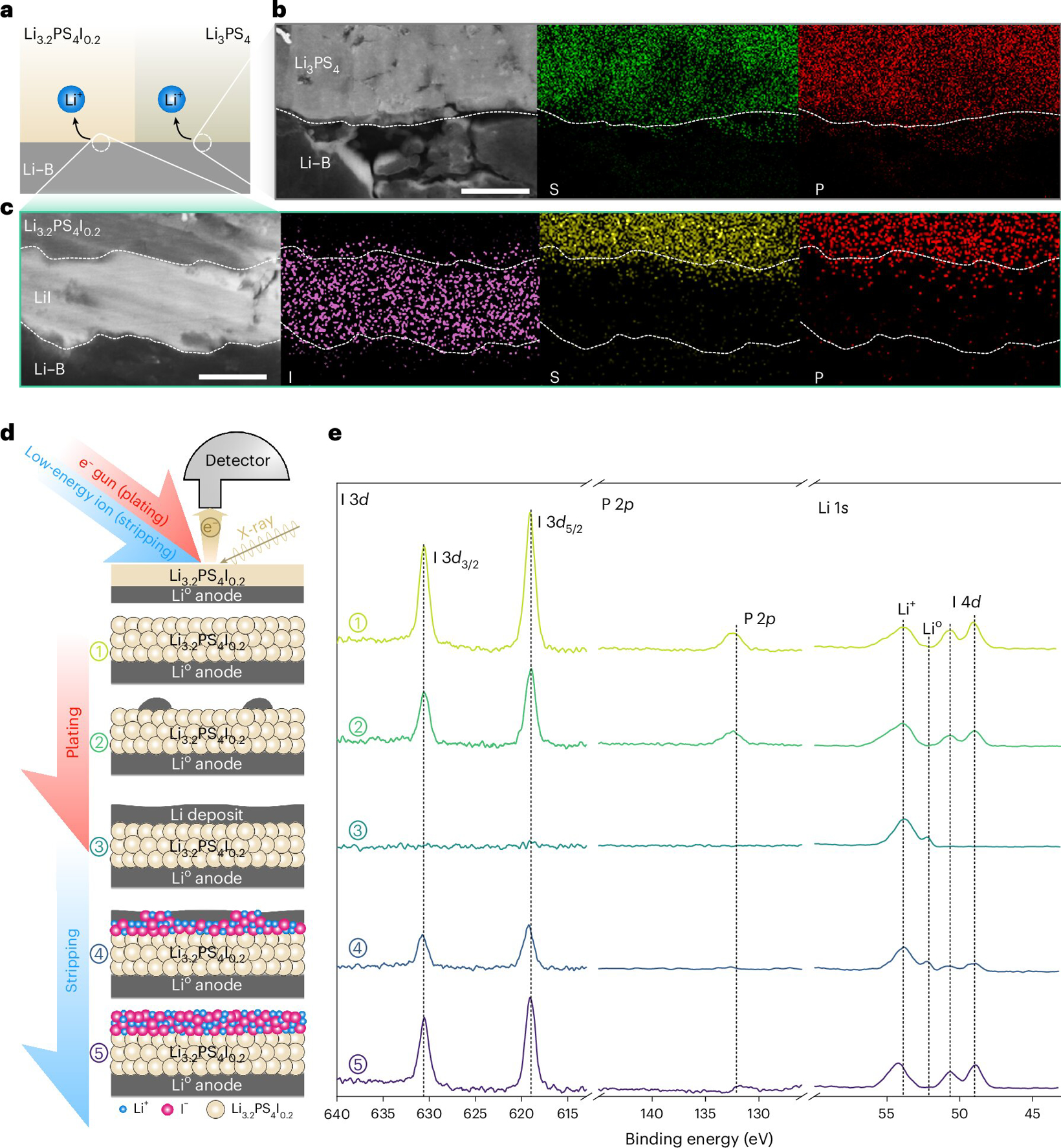Scientists Invent Self-Healing Layer to Enhance Safety and Longevity of All-Solid-State Lithium Batteries
Most commonly used batteries currently contain flammable liquid electrolytes. The next development direction for batteries is ASSLMB, which replaces the flammable liquid with non-flammable solid materials to transmit charge between electrodes. Although their safety is significantly improved, there is a key drawback that hinders their reliability and longevity. Repeated charging and discharging can lead to the formation of gaps between the solid lithium metal anode and the solid electrolyte, meaning the battery can quickly become damaged and stop working.

Image source: Journal "Nature Sustainability"
According to foreign media reports, scientists from the Chinese Academy of Sciences have discovered a new method involving a self-repairing layer called DAI (Dynamically Adaptive Interphase) that can maintain the connections in batteries, enhancing the safety and performance of all-solid-state lithium metal batteries (ASSLMB). ASSLMB is a next-generation energy technology that will power a variety of devices, from electric vehicles to renewable energy grids.
As described by the team in a paper published in the journal Nature Sustainability, DAI introduces mobile iodine ions into the solid electrolyte while the battery is in operation. These iodine ions move to fill any gaps that occur. This dynamic layer acts as a continuous sealing layer, maintaining the connection between the layers and ensuring the battery functions properly. It reduces the need for the current complex and impractical solution of compressing the battery layers with high external pressure.
The laboratory test results of the battery are remarkable. Even after 2400 charge-discharge cycles, the complete battery cell can still maintain more than 90% of its energy capacity. To demonstrate the practical application potential of this technology, the team also assembled and tested a pouch cell (a type of battery commonly used in modern electronic products and electric vehicles). Without applying external pressure, the battery maintained 74.4% of its capacity after 300 cycles.
The future of batteries?
DAI is currently in the early stages of development, but if scaled up, it could bring about disruptive changes. Researchers commented in their paper: "The DAI strategy represents a paradigm shift in solid-state battery design, accelerating the practical application of high-energy, sustainable electrochemical storage systems within existing energy networks."
The self-repairing solutions developed by scientists are expected to pave the way for safer, more environmentally friendly, and longer-lasting batteries. This technology could also enable electric vehicles to have longer ranges and provide more reliable and sustainable grid storage facilities. In manufacturing, there will be no need to install high-voltage systems within the battery packs, making large-scale production simpler and more economical.
【Copyright and Disclaimer】The above information is collected and organized by PlastMatch. The copyright belongs to the original author. This article is reprinted for the purpose of providing more information, and it does not imply that PlastMatch endorses the views expressed in the article or guarantees its accuracy. If there are any errors in the source attribution or if your legitimate rights have been infringed, please contact us, and we will promptly correct or remove the content. If other media, websites, or individuals use the aforementioned content, they must clearly indicate the original source and origin of the work and assume legal responsibility on their own.
Most Popular
-

List Released! Mexico Announces 50% Tariff On 1,371 China Product Categories
-

Nissan Cuts Production of New Leaf EV in Half Due to Battery Shortage
-

New Breakthrough in Domestic Adiponitrile! Observing the Rise of China's Nylon Industry Chain from Tianchen Qixiang's Production
-

Dow, Wanhua, Huntsman Intensively Raise Prices! Who Controls the Global MDI Prices?
-

Mexico officially imposes tariffs on 1,400 chinese products, with rates up to 50%






